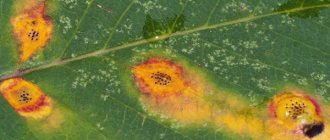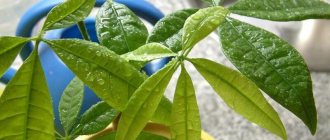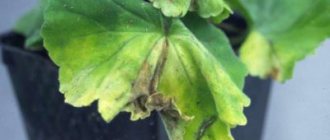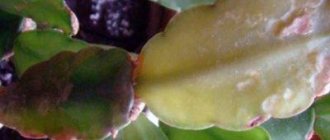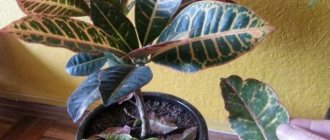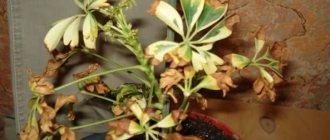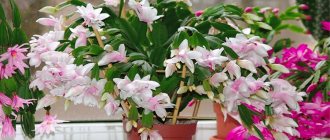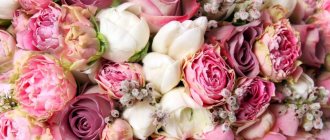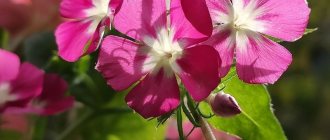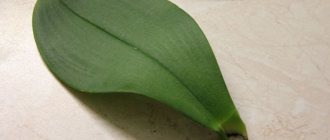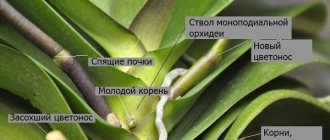Plants similar to hemp in appearance are not dangerous for gardens, but the resemblance to cannabis is not always pleasant. This is, as a rule, a weed that clogs cultural plantings and multiplies rapidly. Fertilization of female plants with pollen occurs with the help of wind, bumblebees, wasps or other insects.
Uninformed people may mistake such plants for drugs, write a complaint, and the owner of the garden will have to endure several unpleasant minutes when the drug police visit.
Plants similar to hemp
In nature, there are many representatives of the flora that are similar in appearance to cannabis. Hops (Hamulus) also belongs to the same family as marijuana. The largest areas for cultivation of these plants are in the temperate latitudes of the northern hemisphere and tropical and subtropical climates near the equator. Both types of plants have an alternate or opposite leaf structure, and fertilization of female plants with pollen from males is carried out by wind or insects.
Medical preparations similar to the composition of marijuana
In Europe they use honey. drugs similar to the composition of marijuana, they are legalized, dosages and use are strictly controlled, the drugs themselves are available only by prescription.
"Sativex"
Spray for oral use, prescribed for asthmatics. The active substance, nabiximols, is included in the list of narcotic drugs, therefore it is dispensed strictly on the recommendation of a doctor. Sativex contains a dosed amount of tetrahydrocannabinol and cannabidiol. With one spritz, 2.7 mg of THC and 2.5 mg of CBD enter the human body.
"Dronabinol"
A synthetically produced cannabinoid containing tetrahydrocannabinol, presented in capsule form. There are drops with cannabis under the same name. It is a similar synthetic analogue of the plant THC. Used during chemotherapy to suppress side effects (nausea, vomiting, lack of appetite), for AIDS, if the patient has lost muscle mass. Negative reactions from the use of Dronabinol include: mood changes, hallucinations, fainting.
Historical retreat
Like many types of vegetation similar in species or class to hemp, hemp has been cultivated for thousands of years. Historians believe that the very first varieties of hemp grew in Iran. Afterwards they spread to Eurasia and America, to cool climates, where they acquired new properties valuable to growers. However, the utilitarian benefits of cannabis were known back in the 3000s BC. Very durable fabric was made from strong, wear-resistant plant fibers. Later, during the centuries of colonization, all ships for long voyages were equipped with hemp ropes.
Of course, from a historical point of view, cannabis can be compared, for example, with cotton or nettles (textile sewing). However, growers are interested in completely different plants.
Directory of popular cannabis varieties (II)
You can order hemp seeds in [links]
Buddha's Sister Hemp
Origin: Reclining Buddha - Afghani-Hawaiian Indica: 80% Sativa: 20% Minimum yield: 25-35 g. Cannabis flowering: 9-10 weeks
Previously, the cannabis strain was called Soma Skunk V+, but the name Buddha`s sister was more suitable for both the plant and the coffee shops. With such an intriguing name, this delicious herb began to regularly disappear from the shelves of coffee shops, and to this day it remains the most popular in De Dampkring.
Tall, slender plant. Crossing with Afghani Hawaiian increased the yield significantly, but the taste is not as sweet as Reclining Buddha, more like a sour cherry candy, tart aroma. The heads are sticky, covered with silky fuzz, which means there is an excess of resin. While caring for the plant, you will also find a lot of resin on your fingers. Like all varieties from Soma, Buddha`s sister is medical-grade cannabis with therapeutic properties. Has a powerful effect on mental activity. Being 80% Indica, the plant has good branching. Grows well in hydroponics and is mold resistant.
Grover's interest
Lupine or wolf bean. It can be either annual or perennial. The flowering bushes are very reminiscent of cannabis sativa varieties with a powerful central cola and thin carved leaves. In addition, these plants enrich the soil with nitrogen, which is very important for cannabis. Besides that, they are simply pleasant to look at. Any outdoor grower will easily cover their garden bed with these gorgeous, colorful flowers. They tolerate drought well and can reach 1.5 m in height.
Castor bean. This is the choice of those who prefer to grow Indica. The bushes and leaves are shaped very much like Indica strains. Castor beans are found in the south of Russia. It is used as an ornamental plant. Another important plus is the repelling of flies and other harmful insects, so there is nothing to be afraid of hemp. Interesting fact: castor beans are poisonous and toxic. It is from it (the fruits) that the poisonous substance, ricin, is obtained. This is an option for the front garden, as it is difficult to find in the wild due to its poisonous properties. The grower himself should also be more careful.
Hemp nettle. It has a similar structure of bushes characteristic of Indica - lush and low. The leaves are more Sativa-like. If the plant is solitary, then in adult form it resembles male hemp with dust bags.
Meadowsweet (meadowsweet). The plant got its name because the leaves are shaped like a palm (hand) with fingers spread apart. By the way, this does not prevent them from looking like the leaves of indica cannabis varieties. The bushes also have flowering internodes and large inflorescences on the tops of the plants, which are one-to-one colas.
Nirgundi (Chinese twig). The structure of the bushes resembles lupine or cannabis. Leaves with 5th and 7th lobes, resinous inflorescences in the internodes are also present. The fragrant shrub grows large enough to camouflage a hemp bed. Its homeland is India, China and the Philippines, so it will take root well in temperate and subtropical climates.
Motherwort five-lobed. A perennial plant with opposite lobate leaves and flowering internodes. When flowering, it looks like a bush with a main central cola. It is suitable for camouflaging purple cannabis varieties, since the inflorescences have a beautiful purple or violet color.
Stinging nettle. This plant is considered not only excellent camouflage and protection (because it burns). For its comfortable existence, the same conditions are needed: humidity, looseness and acidity of the soil, temperature, etc. It grows everywhere in temperate latitudes, without causing bewilderment or curiosity. It can grow more than 1 m in height, and during flowering it resembles a cannabis bush with a large central cola.
*All information provided is for informational purposes only and does not constitute guidance or a call to action.
**We remind you that the use of marijuana seeds as seed material (growing hemp for the purpose of obtaining a plant) is prohibited by the Criminal Code of the Russian Federation. You can find out more about the law here.
Methods confirming properties
Experienced breeders distinguish varieties by external characteristics when examining the plant, and by the type of raw material. First of all, old, poorly preserved species are discarded. Dry leaves are kneaded in the hand; when overdried or stored for long periods, they disintegrate into dust. Mold can be located on the leaves, trunk and inside the buds. The appearance of the plant does not determine the completeness of information about the variety, therefore microscopic examination is used to identify small glands that produce resin on the outer shell of leaves, trunk, and flowers.
Smells give an idea of quality: a fresh “bouquet” indicates a good variety; if there is a smell of mold, mustiness or is completely absent, there is a suspicion of poor storage, the use of pesticides and artificial fertilizers. If the quality is low, hemp is not suitable for consumption.
Experienced cannabis growers check the buds and stems when breaking them. Good varieties produce a sound that can be heard by ear as a click. Wet hemp makes no sound, but overdried hemp crunches. It is recommended to taste only fresh varieties identified through previous inspections.
In case of controversial issues, the examination is carried out in the laboratory. Dry leaves and stems, flowers, extracted oil and manufactured products are subject to examination. Methods are based on enzyme immunoassay or gas chromatography.
Family Hemp
Hemp is an annual dioecious herbaceous plant from the Cannabis family of the order Rosaceae. As classifications have changed, hemp has been classified at various times in the mulberry, mulberry, and nettle families.
Under natural conditions, hemp can grow almost throughout the entire globe, except for the cold northern latitudes. The optimal climate zones are tropical, subtropical and temperate.
Characteristic features of the appearance of cannabis are leaves, dissected by blades with an odd number of them. The size of the leaves and the number of blades on them decreases from the middle of the trunk to its top.
Hemp's closest relative
The closest relative of hemp is hops, another of the most famous representatives of the Cannabis family. Despite the close relationship, it is quite difficult to confuse hops and hemp - the stem of hemp is erect, while that of hops is curly. The shape of the inflorescences, the structure of the leaves and fruits also differ.
Hops and hemp are similar in that they only require female plants to produce a harvest. The need for male plants arises only for procreation - when it is necessary to develop new varieties or obtain seeds for planting.
Cannabis: poison or medicine? Find out about the incredible benefits of this controversial plant!
People love to unite against a common enemy, and hatred of cannabis is a prime example of this. Everyone has a few crazy stories about how smoking cannabis ruined the life of a promising person. And it doesn’t matter that, in addition to cannabis, he regularly used substances that were much more serious.
cannabis as scary as we used to think? This is not an idle question, because quite recently this cute plant was very popular in various sectors of life and was held in high esteem. Why has cannabis become a banned product and causes chilling horror among average citizens?
Their appearance resembles cannabis
There are plants that can perfectly play the role of convenient extras for cannabis. They are similar to hemp not only in appearance, but also in terms of growing conditions. This makes it much easier for growers to care for both bushes. You can plant a large plot of land with twin plants to effectively camouflage several hemp trees among harmless bushes.
Hemp-like sapling
A perennial herbaceous plant from the Asteraceae family with a straight stem and three- to five-finger leaves. It reaches a height of 20-50 cm and at the vegetative growth stage is very similar to cannabis. The basket-shaped flowers are located at the tops of the stems and have a soft pink hue. The sapling blooms in June-July, and fruit-seeds appear in August. A window sill in a garden or dacha plot will not raise any questions for anyone, because it is often planted as an ornamental plant.
Motherwort five-lobed
A perennial herbaceous plant, reaching a height of 50-200 cm, depending on growth conditions. It has one or more erect branched stems with petiolate bright green leaves. The upper leaves have three lobes, the lower leaves five. The structure of the plant and the shape of the leaves are similar to cannabis. During flowering, Motherwort pentaloba produces a central light lilac inflorescence, reminiscent of the central cola of cannabis.
Hemp nettle
A herbaceous plant with an erect stem that can reach a height of 150 cm, and under favorable conditions grow above two meters. The bushes of this nettle are very similar in structure to hemp; large leaves have 3-5 deeply divided finger parts. Particularly similar to cannabis are male hemp nettle plants, which have clusters of dust sacs. Hemp nettle blooms from June to August, and in August produces fruits in the form of small nuts 2-2.5 mm.
Stinging nettle
A perennial herbaceous plant with a straight stem, reaching a height of 60 cm to 2 meters (under ideal climatic conditions). This nettle is widespread in the temperate zone, so you can find it in any area, and this will not cause any surprise. Connoisseurs of guerrilla growing can safely plant cannabis on the outskirts of the forest among thickets of stinging nettle. The leaves of this plant are dark green in color, and the flowering bushes from a distance look very similar to cannabis with one central cola.
Chinese twig (Nigrundi)
The appearance of this plant during the vegetative growth stage is almost impossible to distinguish from cannabis. Chinese twig has the same straight stem and dark green palmately compound leaves, consisting of 3-5 pointed parts. In its natural environment, Nigrundi grows in China, India and the Philippines. In favorable conditions it can reach 3 meters in height. During the flowering period it is covered with beautiful lilac, blue or white flowers.
From Sanskrit, “nigrundi” is translated as “protecting the body from disease,” and this name was not given by chance, since the plant has great medicinal potential.
Meadowsweet (meadowsweet)
A herbaceous plant with a straight stem and large 5-7-lobed leaves that closely resemble cannabis leaves. The plant has healing properties, loves a humid climate and blooms in the first half of summer. A large inflorescence of meadowsweet at the first stage of its formation looks like a hemp bud.
*All information provided is for informational purposes only and does not constitute guidance or a call to action.
**We remind you that the use of marijuana seeds as seed material (growing hemp for the purpose of obtaining a plant) is prohibited by the Criminal Code of the Russian Federation. You can find out more about the law here.
“Non-hemp”
I saw a plant in the south. This happened only 3 times: in Sudak, Evpatoria, Gurzuf. And every time I heard comments: “Girl, this is not hemp!” Shrub, leaves similar to hemp leaves, with blue or lilac flowers.
Help as much as you can, good people! Maybe “non-hemp” will be defined.
This is common twig, vitex or Abraham tree (Vitexagnus-castus) from the verbena family. Interestingly, in Sanskrit, prutnyak is called “nirgundi,” which literally means “protecting the body from diseases.” This plant is described in ancient Ayurvedic texts (Samhitas).
Common twig is a deciduous tree or shrub 2-8 m high and wide. It grows wild in the Crimea, the Mediterranean and Western Asia. The leaves are 5-7 palmate, slightly toothed, very similar to hemp leaves, fragrant, up to 10 cm long. The flowers are small, tubular, fragrant, from purple to dark blue in color, sometimes white, light pink, collected in long apical panicles , 13-18 cm long, bloom from late July - August.
The fruits are dry, small, spherical, pubescent drupes, 3-4 mm in diameter, in dense infructescences (panicles); ripen in October-November. This plant produces abundant seeds, which have a spicy taste, but, unlike other spices, do not have a tonic (stimulating) effect on the human body. In Transcaucasia, the fruits of common twig are harvested as a spice.
In addition to common twig, in the Primorsky Park of the Nikitsky Botanical Garden, Chinese twig (Vitexnegundo) native to China, India, and the Philippines grows. It is a deciduous shrub or tree up to 3 m high with tetrahedral gray felt shoots. The leaves are opposite, palmately compound, with 3-5 leaflets with a serrate margin. The leaves are smooth, with a typical pungent odor. The flowers are bluish-white or purple, small, collected in panicles. The fruits are dry drupes, spherical, black with 4 seeds; ripen in autumn. Dried fruits resemble pepper in taste and aroma. In the Nikitsky Botanical Garden since 1814
The twigs are quite drought-resistant, undemanding to soils, and can grow on calcareous and saline soils. They look impressive in single plantings and hedges. The twigs are propagated by freshly harvested seeds, which germinate within a year in indoor or greenhouse conditions. Or vegetatively: by dividing the bush or using green, lignified cuttings. Cuttings prepared in the fall are rooted in a greenhouse and planted in open ground in the spring. Stored seeds need stratification at a temperature of +5°C for 3 months. The seed placement depth is 2-3 cm.
All parts of Vitex (especially the fruits) have a strong spicy pungent aroma and taste. The leaves, as a hot spicy seasoning, are used in salads, stewing and frying meat and vegetables, and canning the latter. The most widely used as pepper are the fruits of the twig, which even look similar to black pepper, but are smaller in size and lighter in color. They improve appetite, promote digestion, act like pepper, but milder, so they are used in dietary nutrition. Essential oil is obtained from the fruit.
What other plants besides hemp produce cannabinoids?
Acmella oleracea
It is known as a remedy for toothache. The natives of the Amazon make a strong pain-relieving ointment from this plant. Experiments conducted by the University of Cambridge showed that the plant is good at blocking pain receptors on nerve endings.
Its cannabinoid-like substances are called N-isobutylamides; they act on CB2 receptors. Thanks to these properties, the plant is used as an analgesic for severe inflammatory processes. It is currently being considered as a new dental treatment for pain caused by the development of wisdom teeth.
Liverwort (Radula marginata)
It turns out that there are other versions of THC in the world. New Zealand liverwort contains significant amounts of perrottetinenic acid, which was first discovered in 2002 and is remarkably similar to THC. It is assumed that it can act in the same way on CB1 receptors. This receptor, when combined with THC, produces a psychoactive effect.
So far, there have not been any documented cases of this plant being used for its psychoactive effect. But liverwort has historically been used in the treatment of bronchitis, gallbladder, liver and bladder. This indicates its medicinal value.
Chocolate tree (Theobroma cacao)
Cannabis smokers know that drinking dark chocolate before taking a puff can increase their high. This is because chocolate contains many compounds that interact with the endocannabinoid system. Similar to the non-psychoactive CBD found in hemp, chocolate contains the FAAH enzyme.
FAAH is responsible for anandamide, which is found in the human body and is a natural version of THC. Chocolate increases the amount of anandamide, and this process makes a person feel generally good and calm.
In addition, in 1996, scientists at the Neuroscience Institute in San Diego, along with anandamide, discovered two more separate compounds in chocolate that act like cannabinoids. Although chocolate is not as potent as THC, it certainly has more effects on the brain and body than you might expect.
Black pepper (Piper nigrum)
Some cannabis strains, such as Hash Plant, have a peppery taste and aroma. The fact is that pepper contains special terpenes called beta-caryophyllenes (BCF). Terpenes are found in large quantities in plant essential oils and give them their aroma. Not surprisingly, the same flavor was found in black pepper.
More recently, it has been discovered that BCPs actually act in the same way as cannabinoids. BCPs have a similar ability to act on CB2 receptors. Research has shown that the terpene's anti-inflammatory compounds make it a valuable drug in the treatment of diseases such as arthritis and osteoporosis. It has also been shown that BCPs can improve the effectiveness of anticancer drugs.
These are just a few plants known to interact with the endocannabinoid system. There are also Peruvian maca and Chinese rhododendron. As research continues, there will definitely be more such plants.
The hemp plant paved the way for the discovery of the endocannabinoid system in our body. Today, botanists and natural scientists know that plant cannabinoids are much more widespread than we realized. All of the plants listed above have valuable therapeutic properties. Many of them have been used as traditional medicines for centuries. We are just beginning to understand why they are so useful.
Kava
Kava root is used to reduce stress, anxiety, prevent PA, and relieve headaches or muscle pain. It contains compounds similar to cannabis, kavalactones, incl. yangonin, which directly interacts with CB1 receptors. Specific compounds that interact with proteins in the endocannabinoid system are responsible for kava's known anti-anxiety effects.
poppy
In appearance, the root vegetable is not at all similar to hemp; it is a wild turnip, native to Mexico, a vegetable, considered an adaptogen. With the help of maca powder you can easily cope with stress, bad mood, and insomnia. This superwood contains N-alkylamide (NAA) compounds that mimic the bioactions of cannabinoids.
Copaiba
Oil resin is popular in Brazil as a remedy that helps with internal inflammatory processes. When the central nervous system is disrupted, copaiba has a neuroprotective effect. Copaifera reticulata oil contains β-caryophyllene, a dietary cannabinoid with powerful anti-inflammatory effects. β-caryophyllene binds to CB2 receptors and inhibits inflammation-fighting pathways.
Holy Basil (Tulsi)
The plant is used to treat diabetes, cancer, hypertension, respiratory infections, etc. It contains β-caryophyllene, similar to compounds found in hemp, and helps reduce pain and swelling.
The phytocompounds in Tulsi are believed to act as antagonists of PPAR (peroxisome proliferator-activating receptors). They help a person cope with stress and regulate brain inflammation. This property is useful for patients with epilepsy, because the disease is associated with decreased levels of cannabinoids and PPARs. Therefore, we can say that tulsi is similar in properties to the hemp plant.
What types of hemp are there, or the magical properties of the plant that are not associated with smoking.
Hello dear friend. Once upon a time, I already happened to write three whole articles about this wonderful plant, but what happened was long forgotten. I think hemp definitely deserves a lot more attention than other plants. Therefore, there will be a fourth part. Sit back, today we will continue to dispel stupid myths
First, let’s tell the reader why the article is called that way. The fact is that in the minds of most modern citizens the word hemp is associated only with smoking hemp. This sad consequence of prohibitions and anti-propaganda has led to the fact that the hemp industry has completely collapsed, as they say, and people are even afraid to say this word out loud.
People who grew up on these fairy tales don’t even think that besides the above-mentioned smokable hemp, there is another kind, and it’s difficult for them to imagine hemp itself as a plant. And all because no one told them what kind of plant it was, and why hundreds of thousands of hectares were planted with it. And I'll tell you.
Hemp is a dioecious herbaceous plant from the Cannabis family. Previously, it was classified either in the nettle family or in the mulberry family, but this does not interest us at all. The bushes look unique: on a straight stem, hemp grows palmate leaves with denticles, and its flowers are complex spikelets, covered with resin and collected in lush inflorescences. It is hardly possible to imagine this to someone who has not seen hemp in person. If these bushes grew among thousands of other plants, they would not bother anyone, but for some reason a person needed to grow it.
And here are the dried inflorescences. They can be used only for legal purposes, and only if the doctor allows it.
Someone will say: “Well, it’s clear why. To smoke! But no. Those parts of hemp that people are interested in are its long stem, from which hemp is obtained, and the seeds. In a couple of months, a hemp bush grows 3-4 meters in height, and does not require chemical protection from pests and does not deplete the soil.
To obtain hemp fiber, hemp is grown, which is also called industrial hemp. These are varieties of the cannabis sativa species specially selected by breeders, which grow quickly and produce good fiber. The same breeders also select the most non-narcotic specimens: the content of psychoactive substances in such hemp is 0.2-1%.
In addition to technical cannabis, there is psychoactive cannabis. You cannot get high-quality fiber from it, but there are much more psychoactive substances in it: from 15 to 25%. The record holders for surfactant content are variety A of the cannabis indica species. These are low, fluffy bushes that look like Christmas trees. It is because of this hemp that industrial varieties were also banned.
The recreational qualities of psychoactive cannabis are associated with the content of various substances with complex names in the resin of female plants. This resin protects flowers from ultraviolet radiation, and also prevents any small living creatures from crawling on the plant. Any violator will simply stick to the resin and die of starvation.
The magical properties of hemp have been known since ancient times. The sap and resin were used to treat illnesses and also to relieve pain. Now other, often more harmful, substances are used for the same purposes. Sometimes they don’t even disdain opioids, which goes beyond common sense and greatly offends cannabis. For reference: opioids are substances that are similar in structure to morphine. And morphine is the main alkaloid of poppy, from which heroin is made, known for the rapid addiction to this drug.
It’s sad to see how such a useful plant is talked about only in a negative way. The myths created around cannabis are so ingrained in people’s consciousness that they prevent us from understanding the world around us. Our grandfathers wore solid, comfortable and durable hemp shirts, and we wear Chinese synthetic T-shirts. Read books about Russia in the 19th and 20th centuries, and you will see that hemp was in the same place in cultivation as wheat and corn. Most likely, this book was also made from hemp.
Draw your own conclusions, gentlemen. Also, take care of yourself and don’t break the laws. The Book of Plants was with you. Have a good day!
Useful properties of hemp
- Hemp and fabric Hemp fiber is very strong and does not wear out even with prolonged exposure to water. The textile industry loses a lot by refusing to produce clothing from hemp fibers, because hemp fabric is 10 times stronger than cotton! Ropes, ropes and bags made of hemp fabric are the most durable.
- Hemp and paper One hectare of hemp field produces 4 times more raw material for paper production than the same area planted with trees. Where are environmentalists looking?
- Hemp and coal Hemp stems and seeds can be used to make coal, methane and gasoline, the combustion of which does not release environmentally harmful sulfur, which causes acid rain and air pollution. Such charcoal can be successfully used, like regular charcoal, and hemp oil can be an excellent fuel.
These facts indicate that hemp is very profitable to grow and use for industrial purposes. But this doesn't happen. Why make inexpensive and high-quality products for people if you can trade oil, inflate prices for cotton, sell fine grades of paper and other goods that compete with hemp products? In order to denigrate the plant and create a bad image for it, in 1961, US businessmen made every effort to prohibit the cultivation of hemp, citing its dangerous narcotic effect on the human body.
Hemp and health Medical books from past centuries contain a lot of valuable information about the benefits of hemp. Multiple sclerosis, cancer, AIDS, glaucoma, depression, epilepsy, migraine, asthma, severe pain, dystonia, sleep disorders, appetite disorders are just a small list of diseases for which cannabis can be effective.
Hemp contains in its composition: resin, vitamin K, cholesterol, choline, sugars, saponins, edestin, alkaloids, phytoncides, essential oil, carotene, tetrahydrocannabinol, cannabidiolic acid, delta-9-tetrahydrocannabinol. The calming, relaxing, analgesic effect of cannabis is on par with medical drugs created for these purposes.
Hemp seeds are a powerful source of protein and fatty acids, and the seeds are easily digested and absorbed by the body. The moisturizing properties of hemp oils can be used for cosmetic purposes, skin care products and shampoos. Hemp oil is incredibly healthy and can be eaten just like olive oil.
Smoking cannabis has always been a good tradition in Asian countries. Perhaps this is why alcohol is not as widespread there as in Russia. It is much more profitable for a consumer society to sell alcohol, which has no benefit at all, to sick and embittered people. The conclusions suggest themselves...
Hemp has a great future, because when the planet runs out of oil, the existence of this plant will certainly be remembered. Tell your friends that criticizing cannabis is no longer fashionable. Demand for a variety of hemp products has increased the area under cultivation in Europe, with shops selling clothing and other hemp products popping up.
Some countries have legalized cannabis as medicine . Of course, we are far from the awareness of the civilized world, but everyone must understand for themselves that they need to form their own opinion about the product, and not blindly follow propaganda. In the hands of a fool, even medicine can become poison, but this does not mean that one should abandon it due to unfortunate circumstances.
Did you like our site? Join or subscribe (you will receive notifications about new topics by email) to our channel in MirTesen!
Family Hemp
Hemp is an annual dioecious herbaceous plant from the Cannabis family of the order Rosaceae. As classifications have changed, hemp has been classified at various times in the mulberry, mulberry, and nettle families.
Under natural conditions, hemp can grow almost throughout the entire globe, except for the cold northern latitudes. The optimal climate zones are tropical, subtropical and temperate.
Characteristic features of the appearance of cannabis are leaves, dissected by blades with an odd number of them. The size of the leaves and the number of blades on them decreases from the middle of the trunk to its top.
Hemp's closest relative
The closest relative of hemp is hops, another of the most famous representatives of the Cannabis family. Despite the close relationship, it is quite difficult to confuse hops and hemp - the stem of hemp is erect, while that of hops is curly. The shape of the inflorescences, the structure of the leaves and fruits also differ.
Hops and hemp are similar in that they only require female plants to produce a harvest. The need for male plants arises only for procreation - when it is necessary to develop new varieties or obtain seeds for planting.
Their appearance resembles cannabis
There are plants that can perfectly play the role of convenient extras for cannabis. They are similar to hemp not only in appearance, but also in terms of growing conditions. This makes it much easier for growers to care for both bushes. You can plant a large plot of land with twin plants to effectively camouflage several hemp trees among harmless bushes.
Hemp-like sapling
A perennial herbaceous plant from the Asteraceae family with a straight stem and three- to five-finger leaves. It reaches a height of 20-50 cm and at the vegetative growth stage is very similar to cannabis. The basket-shaped flowers are located at the tops of the stems and have a soft pink hue. The sapling blooms in June-July, and fruit-seeds appear in August. A window sill in a garden or dacha plot will not raise any questions for anyone, because it is often planted as an ornamental plant.
Motherwort five-lobed
A perennial herbaceous plant, reaching a height of 50-200 cm, depending on growth conditions. It has one or more erect branched stems with petiolate bright green leaves. The upper leaves have three lobes, the lower leaves five. The structure of the plant and the shape of the leaves are similar to cannabis. During flowering, Motherwort pentaloba produces a central light lilac inflorescence, reminiscent of the central cola of cannabis.
Hemp nettle
A herbaceous plant with an erect stem that can reach a height of 150 cm, and under favorable conditions grow above two meters. The bushes of this nettle are very similar in structure to hemp; large leaves have 3-5 deeply divided finger parts. Particularly similar to cannabis are male hemp nettle plants, which have clusters of dust sacs. Hemp nettle blooms from June to August, and in August produces fruits in the form of small nuts 2-2.5 mm.
Stinging nettle
A perennial herbaceous plant with a straight stem, reaching a height of 60 cm to 2 meters (under ideal climatic conditions). This nettle is widespread in the temperate zone, so you can find it in any area, and this will not cause any surprise. Connoisseurs of guerrilla growing can safely plant cannabis on the outskirts of the forest among thickets of stinging nettle. The leaves of this plant are dark green in color, and the flowering bushes from a distance look very similar to cannabis with one central cola.
Chinese twig (Nigrundi)
The appearance of this plant during the vegetative growth stage is almost impossible to distinguish from cannabis. Chinese twig has the same straight stem and dark green palmately compound leaves, consisting of 3-5 pointed parts. In its natural environment, Nigrundi grows in China, India and the Philippines. In favorable conditions it can reach 3 meters in height. During the flowering period it is covered with beautiful lilac, blue or white flowers.
From Sanskrit, “nigrundi” is translated as “protecting the body from disease,” and this name was not given by chance, since the plant has great medicinal potential.
Meadowsweet (meadowsweet)
A herbaceous plant with a straight stem and large 5-7-lobed leaves that closely resemble cannabis leaves. The plant has healing properties, loves a humid climate and blooms in the first half of summer. A large inflorescence of meadowsweet at the first stage of its formation looks like a hemp bud.
*All information provided is for informational purposes only and does not constitute guidance or a call to action.
**We remind you that the use of marijuana seeds as seed material (growing hemp for the purpose of obtaining a plant) is prohibited by the Criminal Code of the Russian Federation. You can find out more about the law here.
Plants similar to hemp, like hemp itself, belong to the family of dicotyledonous plants of the Rosaceae order called Cannabis. It includes only two genera of herbs - the erect Cannabis and the climbing Humulus (hops). These plants are most widespread in nature and artificial cultivation in the temperate latitudes of the northern hemisphere, in the subtropical and tropical climates on both sides of the equator. Their leaves have an alternate or opposite structure. Fertilization of inflorescences occurs with the help of wind, which can carry male pollen over long distances. Plants of the hemp family can be perennial or annual.
It is believed that the hemp genus first appeared in Iran. From there it spread to the northern regions of Eurasia and North America, mutating into new species. Man first began using cannabis in ancient China, around 2700 BC. e. Being a fibrous plant, it was very well suited for creating durable clothing. Hemp was most widely used during colonial times. It served as the main material for making ropes and sailcloth for ships of all the major maritime powers of that time. The decline in production occurred during the transition of the ship industry to steam engines.
Hemp's closest relative
The closest relative of hemp is hops. This genus includes 2 plant species. It is cultivated in many countries around the world in the temperate climate zone of North America, Europe and Asia. Some of the largest plantations of this plant are located in Ukraine and the south of the European part of the Russian Federation. Just like when cultivating hemp, hop plants are bred exclusively female. Males are used only for procreation and breeding new varieties. Hops go wild very quickly, which makes it difficult to determine its natural habitat.
The most common type of hop is Humulus Iupulus (common). It is a perennial plant whose stems can exceed 10 meters in length. With the arrival of winter they die, and in the spring they grow again from the buds of the rhizome.
In nature, there are many representatives of the flora that are similar in appearance to cannabis. Hops (Hamulus) also belongs to the same family as marijuana. The largest areas for cultivation of these plants are in the temperate latitudes of the northern hemisphere and tropical and subtropical climates near the equator. Both types of plants have an alternate or opposite leaf structure, and fertilization of female plants with pollen from males is carried out by wind or insects.
Historical retreat
Like many types of vegetation similar in species or class to hemp, hemp has been cultivated for thousands of years. Historians believe that the very first varieties of hemp grew in Iran. Afterwards they spread to Eurasia and America, to cool climates, where they acquired new properties valuable to growers. However, the utilitarian benefits of cannabis were known back in the 3000s BC. Very durable fabric was made from strong, wear-resistant plant fibers. Later, during the centuries of colonization, all ships for long voyages were equipped with hemp ropes.
Of course, from a historical point of view, cannabis can be compared, for example, with cotton or nettles (textile sewing). However, growers are interested in completely different plants.
